CMMC Practice AC.L2-3.1.13 – Remote Access Confidentiality: Employ cryptographic mechanisms to protect the confidentiality of remote access sessions.
Links to Publicly Available Resources
This document provides assessment guidance for conducting Cybersecurity Maturity Model Certification (CMMC) assessments for Level 2. The article from the FTC focuses on how a small business can put network security first by giving the employees the tools they need. This NIST Special Publication offers recommendations for designing, configuring, and managing SSL VPN solutions. This NIST Special Publication is one part in a series of documents intended to provide guidance to the Federal Government for using cryptography to protect its sensitive, but unclassified digitized information during transmission and while in storage. This NIST Special Publication offers recommendations for designing, configuring, and managing IPSec VPN solutions. This sample policy provided by SANS can be customized and used to address remote access. This page from The UC Berkeley Information Security Office offers basic tips to system administrators for securing Windows Remote Desktop. In this edition of the On Call Compliance Solutions Compliance Tip of the Week, we discuss cryptographic standards including FIPS-validated cryptography and NSA-approved cryptography.
Discussion [NIST SP 800-171 R2]
Cryptographic standards include FIPS-validated cryptography and NSA-approved cryptography.
Further Discussion
A remote access session involves logging into the organization’s systems such as its internal network or a cloud service provider from a remote location such as home or an alternate work site. This remote access session must be secured using FIPS-validated cryptography to provide confidentiality and prevent anyone from deciphering session information exchanges. When CMMC requires cryptography, it is to protect the confidentiality of CUI. FIPS-validated cryptography means the cryptographic module has to have been tested and validated to meet FIPS 140-1 or -2 requirements. Simply using an approved algorithm is not sufficient –the module (software and/or hardware) used to implement the algorithm must be separately validated under FIPS 140. Accordingly, FIPS-validated cryptography is required to meet CMMC practices that protect CUI when transmitted or stored outside the protected environment of the covered contractor information system (including wireless/remote access). Encryption used for other purposes, such as within applications or devices within the protected environment of the covered contractor information system, would not need to be FIPS-validated. This practice, AC.L2-3.1.13, requires the use of cryptographic mechanisms when enabling remote sessions and complements five other practices dealing with remote access (AC.L2-3.1.12, AC.L2-3.1.14, AC.L2-3.1.15, IA.L2-3.5.3, and MA.L2-3.7.5):
- AC.L2-3.1.12 requires the control of remote access sessions.
- AC.L2-3.1.14 limits remote access to specific access control points.
- AC.L2-3.1.15 requires authorization for privileged commands executed during a remote session.
- IA.L2-3.5.3 requires multifactor authentication for network access to non-privileged accounts.
- Finally, MA.L2-3.7.5 requires the addition of multifactor authentication for remote maintenance sessions.
